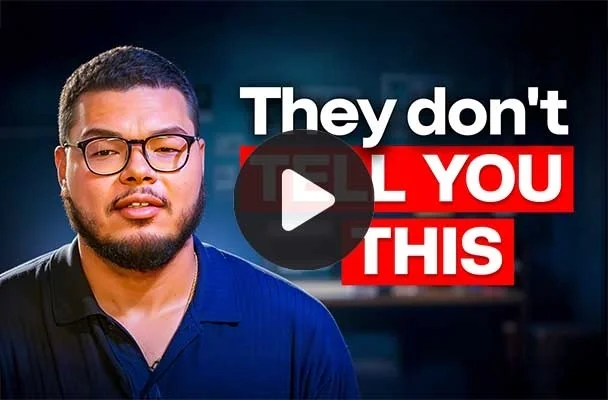
How to Stop Feeling Broke After Military Service
Listen up. That constant "broke" feeling after leaving the military? It's not because you're making less money. It's because nobody taught you how civilian money actually works. You went from a system where everything was handled for you to complete financial chaos overnight.
Here's the reality: About 61% of veterans with PTSD struggle to pay their bills in the first few years out, and Consumer Financial Protection Bureau data shows young veterans routinely become delinquent on debt within 12 months of separation. This isn't about character. It's about skillset.
Stop making excuses and start making changes. Here are six steps that actually work.
Step 1: Stop Pretending Your Military Pay Was "Real" Money Management
Your military paycheck came with built-in safety nets you didn't even realize existed. Housing allowances, subsidized food, free healthcare, automatic retirement contributions. You never had to make hard choices about where your money went because most of the big expenses were handled.
Now you're dealing with actual civilian economics, and it feels like you're drowning because you are. The average civilian manages 15-20 different monthly bills. You went from maybe 3-5 financial obligations to tracking everything from streaming services to car insurance to grocery budgets.
Here's what you need to understand: That "broke" feeling isn't about income. It's about having zero experience managing variable expenses, irregular bills, and the dozens of small financial decisions civilians have been making since their twenties.
Acknowledge this reality. You're not behind because you're incompetent. You're behind because you were busy serving your country while everyone else was learning civilian money management through trial and error.
Step 2: Calculate Your Real Take-Home Pay (Not What You Think You're Making)
Most veterans look at their civilian salary and think they're making good money. But you might not be looking at the right number.
Your military pay included tax-free allowances for housing and food that boosted your spending power significantly. A $50,000 military salary with allowances might have felt like $65,000 in civilian purchasing power.
Here's your reality check: Take your civilian gross pay, subtract federal taxes, state taxes, Social Security, Medicare, health insurance premiums, and any retirement contributions. That number—your actual take-home pay—is what you have to work with. Period.
If that number shocks you, good. Now you're dealing with facts instead of fantasy. This is the foundation of every financial decision you make going forward.
Stop comparing your civilian paycheck to your military pay. They're completely different systems. Work with what actually hits your bank account, not what you wish you were making.
Step 3: Use Your Veteran Benefits Like the Financial Weapons They Are
You're leaving thousands of dollars on the table every year by not maximizing your earned benefits. These aren't handouts—they're tools in your arsenal, and you're operating at half-strength without them.
VA Health Care can eliminate civilian healthcare premiums entirely. If you're paying $300-500 monthly for health insurance when you qualify for VA care, you're burning $3,600-6,000 per year for no reason.
The VA Home Loan is financial warfare against civilian mortgage costs. Zero down payment, no private mortgage insurance. On a $300,000 home, you save $60,000 upfront and $200-300 monthly by avoiding PMI. Use it.
Your Post-9/11 GI Bill eliminates student debt that crushes civilians for decades. The average college graduate carries $37,000 in student loans. You can leave with zero. Many states add tuition waivers and additional benefits on top of federal programs.
Base commissary and exchange access cuts grocery and retail costs by 10-20%. Veteran discounts are everywhere if you ask—airlines, hotels, retailers, restaurants. These aren't small amounts. They add up to thousands annually.
Stop being humble about benefits you've earned. Use every single one.
Step 4: Give Every Dollar Orders (No Exceptions)
Military operations don't succeed with vague guidance. Neither do budgets. Every dollar gets a specific mission, and nothing operates without clear orders.
Start with your take-home pay. Assign every dollar a job: rent, utilities, groceries, debt payments, savings, emergency fund, entertainment. When income minus assigned expenses equals zero, you're done. This doesn't mean you spend everything—it means every dollar has purpose.
Fixed expenses get priority: housing, transportation, minimum debt payments. Variable expenses get limits: groceries, dining out, entertainment. Irregular expenses get monthly allocations: car maintenance, holiday gifts, insurance payments.
If car insurance costs $600 annually, you set aside $50 monthly. If you want to spend $400 on groceries, that's the job for those dollars. No dollar sits around without assignment.
Track this for three months. Adjust when reality hits your plan. Mid-month changes aren't failures—they're tactical updates.
This isn't about restriction. It's about command and control. You decide what your money does instead of wondering where it went.
Step 5: Build Your First Emergency Fund (Start Small, Build Fast)
That "broke" feeling often comes from getting blindsided by unexpected expenses. Your car needs repairs. Your laptop dies. You get a medical bill. Without an emergency fund, every surprise becomes a financial crisis.
Start with $500. Not $10,000. Not six months of expenses. Just $500.
Here's why: $500 covers most small emergencies that would otherwise force you into debt. Parking tickets, minor car repairs, replacement household items. Getting to $500 builds the habit and eliminates the panic of small financial surprises.
Once you hit $500, build to $1,000. Then one month of basic expenses. This isn't about perfection—it's about progress and peace of mind.
Put this money in a separate savings account. Don't touch it unless it's a genuine emergency. Having this cushion eliminates the constant stress of living paycheck to paycheck.
Most veterans skip this step because they think they need to tackle debt first. Wrong move. Without an emergency fund, every unexpected expense derails your debt payoff plan and keeps you in the broke cycle.
Step 6: Attack High-Interest Debt Like the Enemy It Is
High-interest debt is the reason you feel broke even when your income should be sufficient. Credit card debt at 18-25% interest rates will destroy any financial progress you try to make.
List all your debts: credit cards, personal loans, car loans, student loans. Note the balance, minimum payment, and interest rate for each.
Pay minimums on everything, then attack the highest interest rate debt with every extra dollar you can find. This is about math, not emotions. The highest rate is costing you the most money.
If you have $5,000 in credit card debt at 20% interest and only pay minimums, you'll pay over $1,000 in interest annually. That's money stolen from your future self.
Find extra money by cutting unnecessary expenses temporarily. Cancel subscriptions you don't use. Eat out less. Shop smarter. Every dollar you redirect to debt payoff is a dollar that stops working against you.
Once the highest-rate debt is gone, roll that payment into the next highest rate. Repeat until debt-free.
The Reality Check
Feeling broke after military service isn't permanent—it's a skillset problem with a clear solution. You already know how to plan, execute, and adapt under pressure. Apply that same discipline to your finances.
Stop waiting for the perfect moment or the perfect income. Start with where you are, use what you have, do what you can. These six steps work if you work them.
You've handled harder missions than managing civilian finances. This one just happens to determine whether you build wealth or stay stressed about money for the next decade.
Execute the plan.









